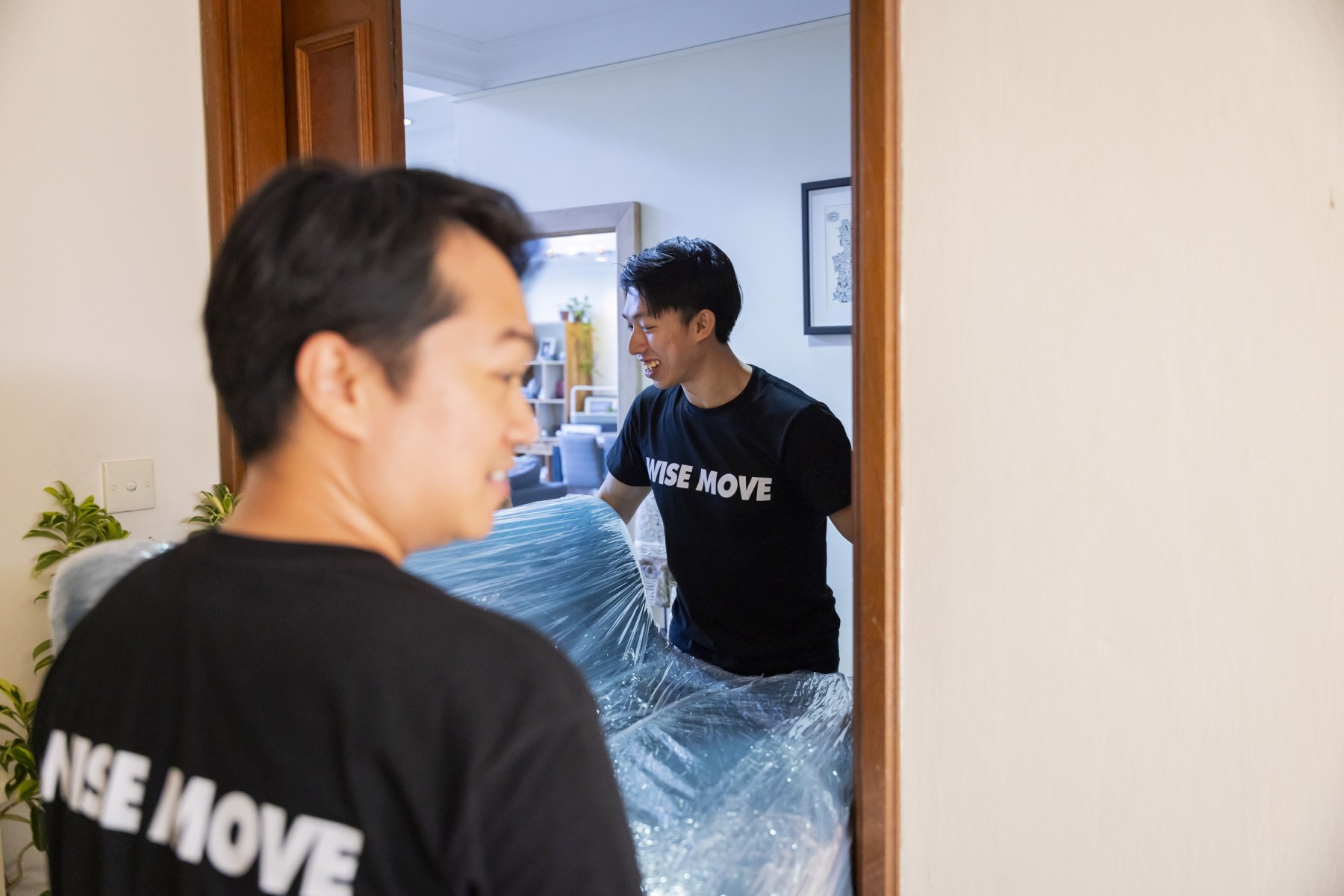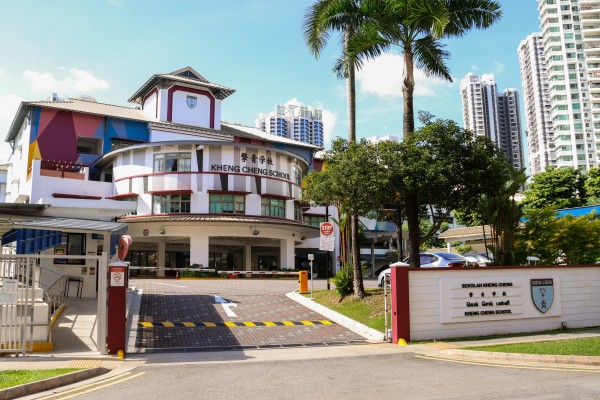The Ultimate Checklist For An Easy Home Move in Singapore

In this guide:
Intro
Singapore is renowned worldwide for its unique housing system. If you are reading this, then chances are that you’re one of the about 80% of the population that live in Housing Development Board (HDB) apartment units. On the flip side, you may also be among the select few who live in luxury condominiums.
Whichever side of the housing spectrum you’re, as long as you live here in Singapore, there’s a huge probability that you’re in a high-rise building. And as if moving under normal circumstances is not already much of a physically demanding exercise on its own, one can imagine how having to ‘commute’ one’s luggage up and down through the stair or elevators might spell more of a nightmarish tale to tell.
In this article, we’ll outline a dumbed-down, made-for-you, and readily actionable guide to moving homes in Singapore. It’s the total package boasting checklists, important tips, and even frequently asked questions. If you’re game, let’s deep-dive right in!
DIY Or Hire Movers?

The million-dollar question. This is where most people are torn between two worlds—a world where you try to save cost and bond with family & friends but risk messing up your move due to a lack of expertise, or one where you sit back, relax, grab yourself a beverage (or good ol’ popcorn) and enjoy the show (because your move is about to be a movie. Haha)
Do-it-yourself (or DIY, as it is more commonly known), is the broad practice of carrying out tasks that would ordinarily require the expertise of professionals, by oneself. Narrowing it down to the ‘moving’ context, it entails enlisting your family and friends to do the packing and moving instead of hiring professional movers.
Right off the bat, we’ll point out that jobs like this—which require professionals—are best left to professionals. Who knows better about packing stuff (considering that many of them are delicate) and moving them up and down elevators like professionals who do this an anatomically correct handful of times in a week?
That said, people have different reasons for wanting to take the DIY route. So, in the end, it is all up to you, we’re here to help you either way.
If DIY, Then What Do You Need?

If doing it yourself is what you have chosen, then you should put the following concerns under consideration.
— Moving equipment
As it should be, this is the first item on the list. Taking a rain check on the services of professionals doesn’t mean that your move wouldn’t require certain special equipment. You’ll be needing moving dollies to move heavy items like furniture, refrigerators, etc. You’ll also need the usual—boxes, packing peanuts, duct tape, shrink wrap, sharpie pens, etc.
— Moving truck
A moving truck is just as important as your moving equipment. All of your stuff is probably not going to fit in the back of your pickup truck or your car. So, you are going to need to rent a truck to convey all the boxes and packages conveniently, to your new home.
— Find help
Don’t be quick to overestimate your strengths.
You are probably going to need help in lifting the refrigerators and beds. As much help as you can find. You may decide to enlist your friends and members of your family. But you may also choose to hire labour-only movers. They’re like the regular movers, but will only help with moving stuff to and from the truck. You will still have to deal with packing and transporting them yourself. If the reason you’re choosing to DIY is that you’re avoiding costs, there’s no need to worry as they do not cost as much as full-service movers.
Engaging Expert Movers? Do This.

***In Thanos’ voice***
"You couldn't live with your own failure. Where did that bring you? Back to me."
Okay. Maybe you didn’t flunk your move first. Seeing that not everyone who hires a professional mover had first made a mess of moving before resorting to hiring professional movers, you should cut yourself some slack for getting it right from the jump. But, the good work doesn’t stop there.
Here’re a few tips to take stock of when scouting for a top-tier hire:
— Reviews
Because what else if not the reviews?! More often than not, what a moving company’s previous clients think of their service is a reliable indicator of whether or not they’re a good fit for you. Hence, you’re better served to take your time and sort through the internet wasteland to dig up reviews on the moving companies you’re considering for the project.
You want only the best (of the best) to handle your precious life’s possessions. That goes without saying.
— Service Policy
Another thing you want to closely look out for is their policy on worst-case scenarios. Items can get damaged or go missing. What is their policy under these circumstances? Do they provide insurance? What about if any of the workers get injured during the process, who bears the liability? If unforeseen circumstances cause a delay, what’re the applicable remedies and policy. And if they charge fees for delays—how much?
— Possible hidden charges
And finally, hidden charges. It is not uncommon to find businesses offer you “complimentary” perks, which in this case might be “unlimited” boxes, shrink wrap, and all sorts. Find out what the costs for all these are, as they eventually add up, and you might find your S$350 bill skyrockets up to a whopping S$600.
Checklist

So, to help ease the process of moving, we have compiled a checklist to help you break down the task into ordered simple steps. Take hint that this is an epic, all-encompassing checklist to end all checklists since the history of moving in modern life.
— Sort, take inventory, declutter and spring clean
The first thing you want to do is sort all your belongings into groups, to make packing more efficient. Declutter by sorting items into five classes—keep, donate, sell, recycle, and trash. We totally dig that it might be difficult to ‘break the sentimental bond you share with most of these items that you’ve not used in years (and let’s be honest, will probably never use again) But most moving companies charge based on weight, volume, and packing these along may only ramp up your bill.
The trick is to ‘keep only what needs to be kept’. You can also donate what you can to any one of the many charity organisations nearest to you, sell what you can (some extra cash wouldn’t hurt anyone, right?), recycle what you can (Because you’re saving the planet. Seriously.) Then, “trash the trash.” Carry out a spring cleaning of your apartment, gather all of the trash, and dispose of it!
Finally, sort all that is left into classes, putting all similar items together. Then, take an inventory, and keep it safe. Preferably, you can keep a copy online where you can access it anytime, from anywhere. Not only will this make packing much easier, but an inventory will also help you keep track of the entire move.
— Take measurements of furniture and other large fixtures
As most of you probably live in an apartment building with elevators. The next thing to do here is to take measurements of your couch, refrigerator, and just about any other large fixtures in your apartment.
This is to check whether and how well they would fit in the elevators. If necessary, you can disassemble any items that won’t fit.
— Inform management
The next step is to inform the management of your condominium or your HDB flat.
Usually, they have pre-set times during which they permit relocation, which makes sense considering that moving can cause a fair amount of ruckus in the neighbourhood.
Usually, they only allow moving during work hours on weekdays and Saturday mornings.
When you contact them, you will likely be given a form to fill, a date, and will likely have to pay a deposit to be refunded after the move. Furthermore, they’ll arrange with you about handing over the keys when you’re done. In some cases, you may hand them straight to the next occupant, otherwise, you just return them to the apartment management.
With the scheduled date, you can now move on to the next step—contacting movers.
— Contact movers
The next step is to browse for available movers in your area. Using the tips that we have earlier mentioned, you should already know what criteria to use in choosing a moving service. With that, you can further narrow your choices. Inform them of the date you already have scheduled with your apartment’s management, obtain quotes, and make your choice.
Also, this is when you purchase all the packing items you need, especially if you’re going to be doing it yourself. Boxes, tapes, shrink wrap—the whole kit and caboodle.
— Take photos/videos. A lot of them
Next, take photos, as many as you can, or every nook and cranny of your apartment. This serves two purposes. First, having pictures of your old apartment at hand will help you to set up your new apartment more easily. You wouldn’t have to worry too much about what goes where.
Secondly, it could help you notice if anything is missing. Between all of the various sizes of stuff to move, the move itself, and all of that, it is very possible to lose items without even knowing that you have. Having photos can help you keep track better.
Second, photos will come in quite handy if you have reason to prove that you left your old apartment in good condition. It is hard to disagree with a time-stamped, unedited snapshot.
— Touch up on your new apartment
Visit your new apartment, clean it out.
It's not enough to assume that the last occupant cleaned it when they moved out, you also have to do some cleaning of your own. Then, inspect the entire place. If any parts require fixing, replacement, or a fresh coat of paint, do what you can yourself, and inform the apartment’s management. It would also help to take a lot of time-stamped pictures/videos here, to back up your claims.
— Pack your stuff into boxes, and label them
At. long. last. You can now begin to pack. Remember we already mentioned that you have to sort and take inventory of your properties. Using the grouping system that you’ve drawn up, pack all similar items together into boxes. If necessary, line the boxes with old papers, or packing peanuts to cushion them. Then, label them on their sides using very visible ink, to inform whoever is carrying them about the content of the box, and to make unpacking easier for you when you arrive at your new apartment.
PS: You also want to make sure to pack all boxes to the brim, so that they are not crushed when stacked.
— Pack an essentials bag
Let’s face it, regardless of how efficient you can get the process to be, or how much you can speed things up, you will not be able to unpack all your stuff the same day. So, pack a bag of essential items – a change of clothes, toiletries, chargers, cash, and cards.
If you’re taking the DIY route, include snacks and bottles of water for every member of your team. And if you hire movers, it won’t hurt to offer them some of these too.
— Make the move
This is your make-or-break moment, the moment you have been preparing for these past few weeks—the move. Start as early as possible to make sure that you have enough time to pack all that you have to pack.
Avoid delaying the movers, as they may charge you extra for delays and, whether you are hiring movers or doing it yourself with your friends and family, use furniture sliders, rugs, and any other suitable materials to protect the floors of your apartment and elevator when moving furniture and other heavy stuff.
Scratches could cause you to lose your security deposit.
— Have Your Meters Read, And Hand The Keys Over
The next thing you want to do is ensure that you have had your gas and electricity meters read. Take photos if you have to. This is to ensure that you do not incur any costs or utilities over services you didn’t use. Also, hand the keys over to either the next occupant or the apartment management, as previously arranged.
— Official Change of Address
In Singapore, it is required by law that you notify local authorities about a change in address within 28 days of moving or risk a S$5,000 fine.
All you have to do is to present any of the following documents:
- A letter from the HDB where you reside
- Cable, telecommunications, insurance, or credit card bills
- Tenancy agreement
- Utility bills
Take any one of these documents (they must have not been issued for more than 3 months ago) to the nearest police station, and the change will be done immediately, at no cost to you.
All participating public agencies will be notified of the change. However, you will have to notify private institutions by yourself – banks, insurance, magazines you are subscribed to, etc.
Handy (Bonus) Tips, Tricks & Hacks

— Roll up clothes to save space
Instead of folding, consider rolling them up. You’ll be surprised by how much space you’ll save by just doing this!
— Use up the space in your suitcase and drawers
Fill them up with the small, lightweight items, and then seal them up properly. Suitcases already have locks, but you can still shrink-wrap them. For drawers, on the other hand, consider taping them shut with a lot of duct tape.
— Jam some of your favourite music
It’s a thing that music makes people work more efficiently. Why don’t you use it to give you that extra pump you need to get go going? Whether you are doing it yourself or hiring movers, or even when you are just packing stuff into boxes, you could never go know with a much-needed morale boost.
— Pack plates using pads and shrink wrap
Plates are very delicate items and are prone to breakage during transport. To reduce this risk, simply interspace the plates with foam plates to cushion the impact of vibrations or any collisions, and then shrink-wrap them tightly.
— Use bubble wrap and shrink wrap generously
Purchase a lot of these two, and don’t be hesitant about using them. Wrap all your items in as much bubble wrap or shrink-wrap as you think necessary, as they are the thin line of defence protecting your property from damage.
FAQs

— How should you dispose of unwanted furniture?
You’re not permitted to leave unwanted furniture lying fallow after you move. They won’t fit in the garbage bin either. So, what you can do is contact a specialist to help dispose of them properly, in line with Singapore’s waste handling guidelines. You may also inquire if the moving company you’ve chosen provides disposal service, some of them do.
— Do movers provide the carton boxes?
Yes, most movers provide not only carton boxes, but also shrink wrap, bubble wrap, literally any moving supplies that you might need. However, all these come at a cost. Be sure to discuss that with them.
— What happens to the boxes after?
Some movers take back the carton boxes after the move, but will not give any refunds. Alternatively, you can resell the boxes on the second-hand market.
Conclusion
We’ve set out to reasonably simplify the process of moving for you. If you have done this before, you’ll find that all of these tips and the checklist will make the process much smoother this time.
And if this is your first time, well, doing it this way just might leave you unable to understand why ‘moving homes’ is not everyone’s cup of tea. Why fuss about it when you can just get in touch with professional movers who’ll help you handle your move with an A-Z, soups to nuts thoroughness that is reminiscent of a true Pro mover?
Get a quotation and a date, and our skilled movers will handle your properties with the care that they deserve, allowing you to rest easy.
Recently completed

What’s happening?
Please notify us of any violations. This information will be kept confidential and shared only with Wise Move.
- It’s inaccurate or incorrect
- If you find it offensive
- It’s something else













